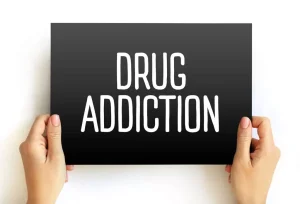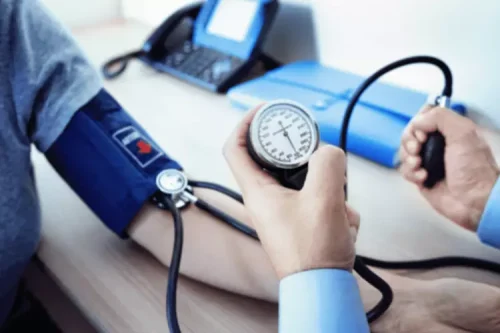Sober living
The physical health of people who inject drugs: complexities, challenges, and continuity PMC
Harm reduction strategies targeting SBI will need to be comprehensive given multiple potential means of introducing bacteria into the process and fluid nature of the risk (during and between separate injection events). The typical medical professional offers minimal information (i.e., clean needle use, avoid needle sharing) for safe injection in the context of complex and varied behaviors. PWID interviewed in this study iv drug use demonstrate what is likely widespread basic understanding of safe injection practices. In addition, PWID interviewed noted information about “safe” practices often travels via word of mouth rather than from medical professionals. PWID would benefit from pervasive messaging throughout the medical system, provided through a more complex and in depth understanding of the potential risks and prevention strategies.
- For this reason, an IV infusion may not be an appropriate method when a person requires a medication urgently.
- In reality, drug addiction is a complex disease, and quitting usually takes more than good intentions or a strong will.
- In some cases, patients may experience a long recovery even if they receive the antitoxin promptly.
Getting the Treatment You Need for Your Addiction
In more severe cases of botulism, symptoms can worsen and even result in death if left untreated. An antitoxin is needed to stop the negative effects of the toxin in your body to treat wound botulism. In some cases, patients may experience a long recovery even if they receive the antitoxin promptly. Those who inject IV drugs are at a higher risk of developing wound botulism, which can be life-threatening. While wound botulism is a less common illness, it is very serious and can develop when a germ known as Clostridium botulinum enters a wound or injection site and creates a toxin. When the body’s nerves are targeted, it can cause difficulty breathing and general muscle weakness.
Individualized, evidence based treatment, to fit your needs.
IV medication is often used because it helps control the medication dosing. For instance, in some situations, people must receive medication very quickly. In these instances, taking pills or liquids by mouth may not be fast enough to get these drugs into the bloodstream. IV administration, on the other hand, quickly sends a medication directly into the bloodstream.
PHYSICAL CHALLENGES FACED BY PATIENTS
Hepatitis C can be difficult to diagnose early for some patients, as it can take from six months to 10 years or more for symptoms to become apparent. Hepatitis causes inflammation in the liver, which can have serious side effects. On average, approximately 80% of people do not exhibit any symptoms of hepatitis. If bacteria reach the blood vessels, it can result in a severe vascular infection.
Choice of antibiotic therapy is dependent on the organism isolated from blood or sputum and may need to be given for a prolonged period – 4 weeks or more depending on clinical progress. Empirical treatment for lung abscesses should cover S aureus, Gram-negative bacteria and anaerobes. This change between DSM-IV and DSM-V in substance-related disorders means the movement froma categorical view to dimensional approach. A categorical view is used by clinicians to meetthe needs of reporting for health care planners; on the other hand, a dimensional approachconceptualizes a quantitative disorder that is more useful for the purpose of research8.
INFECTIOUS DISEASE SCREENING AND TREATMENT
- Introducing drugs during this period of development may cause brain changes that have profound and long-lasting consequences.
- One end of the catheter is placed into a vein in your neck or chest during a short surgical procedure.
- As a person continues to use drugs, the brain adapts by reducing the ability of cells in the reward circuit to respond to it.
- There is a range of other specific physical healthcare problems that may go unnoticed in general practice.
- Cellulitis is a common bacterial skin infection that can result in red streaking of the skin, tenderness, inflammation and pain in the infected area.
Syringe service programs can reduce the risk of HIV and hepatitis C, but they are less likely to reduce the risk of injection injuries. Addiction is a chronic disease characterized by drug seeking and use that is compulsive, or difficult to control, despite harmful consequences. The initial decision to take drugs is voluntary for most people, but repeated drug use can lead to brain changes that challenge an addicted person’s self-control and interfere with their ability to resist intense urges to take drugs.
- You will develop ‘a feel’ for where your veins are and how you need to position and insert your needle in order to get a good hit.
- Substituted cathinones, also called “bath salts,” are mind-altering (psychoactive) substances similar to amphetamines such as ecstasy (MDMA) and cocaine.
- You definitely want to draw your plunger back slightly to make sure no blood comes into the syringe.
- Muscle-popping produces much less bleeding than intravenous injection, if any at all, but the risk of transmitting viruses and other blood-borne bacteria as a result of needle-sharing is as serious as it is with intravenous injection.
- This may be related to limited knowledge and omission by healthcare providers surrounding the multiple potential amplifiers of bacterial infection risk during the injection process.
- As important as preparing your drugs as cleanly as possible is injecting them as safely and as carefully as possible.
In reality, drug addiction is a complex disease, and quitting usually takes more than good intentions or a strong will. Drugs change the brain in ways that make quitting hard, even for those who want to. Fortunately, researchers know more than ever about how drugs affect the brain and have found treatments that can help people recover from drug addiction and lead productive lives.
Injecting a drug is one of the most dangerous forms of drug misuse, as it bypasses your skin’s natural defense systems. https://ecosoberhouse.com/ often causes more intense highs, making it difficult for someone to gauge how much of a drug they have taken. A potential overdose needs to be addressed and treated immediately by a medical professional. The severity of a drug overdose will depend on the type and quantity of the drug taken. An overdose can cause serious medical complications and can result in permanent damage or even death in the most severe cases. Continual injections at the same site can cause scarring, bruising and even vein collapse.
What other factors increase the risk of addiction?
Dependency is problematic because it causes withdrawal symptoms when usage is stopped, leading to difficulties in stopping IV drug addictions. IV drugs are injected directly into the bloodstream with a sterile syringe and hypodermic needle through veins. This is different from intramuscular injections, which are delivered directly into the muscle.
Learn about the risk of getting or transmitting HIV through injection drug use, find out how to reduce the risk, and get additional resources. Because speed is often cut with such dangerous chemicals, it is very important not to miss your shot. Skin-popping speed can be very painful, may cause an abscess, and will take a long time for the body to absorb. If you get the shakes after doing a few shots, it may be helpful to have a friend inject you if you are not using alone. Because the quality of speed varies so dramatically, a tester shot is a good idea. If there’s too much blood in your shot to tell if you’re properly registering, split the shot into two and dilute each half with water.







